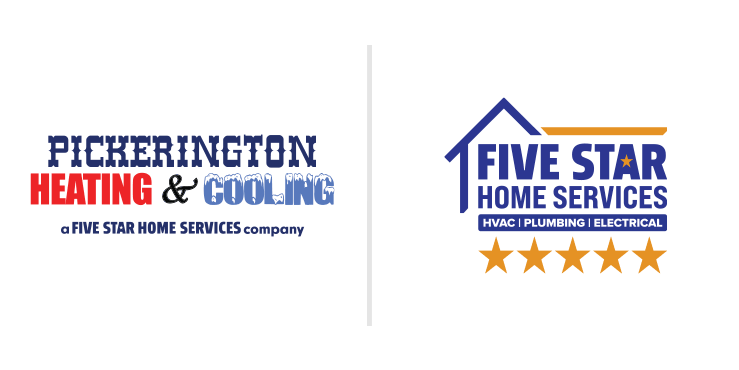💡 We offer whole-house humidifiers installation service, and a customer wanted to know what’s the difference between a system installed on your HVAC and a stand-alone room humidifier?
Dry Air Effects on Living Creatures
If you’re familiar with indoor environments in Ohio during the winter, you know that it is insufferably dry. Extremely dry air (humidity level below 30 percent) can cause dry nasal passages, nosebleeds, chapped and dry itchy skin, contribute to eczema and respiratory irritation, and make breathing challenges like allergies and asthma much worse. Pets can also develop dry and cracked paw pads and respiratory issues from ultra-dry air.
Interior Environmental Effects of Dry Air
Porous materials, such a hardwood floors and furniture, can be damaged by extremely dry air. Wooden musical instruments such as pianos, cellos, violins have been known to crack in these dismal extremely dry days in Columbus. The air “wicks” moisture out of everything in its environment.
A humidity level of 30 to 50 percent is the optimal level suggested by experts. In dry Ohio winters, it’s virtually impossible to reach that high of a humidity level indoors without adding moisture mechanically. There are two types of humidifiers currently in widespread use: a free-standing portable or room unit and a whole-house unit connected to your furnace blower.
Plusses and Minuses of Whole House Humidifiers
Generally, once a whole-house system is installed, you shouldn’t have to fuss with it very often. It’s connected to a house water supply, electricity, and is installed near your furnace’s blower to release moisture into the home’s ductwork. One type includes a sprayer that injects a mist into the airflow of the ductwork; another includes a foam cylinder that revolves within a water tray, blowing air over it into the HVAC ductwork.
The best advantage of a whole-house system? It requires virtually no maintenance, and keeps the entire house at a fixed humidity. It draws water from your home’s water supply as needed, so you never have to worry about filling a water tank or not working because the tank has run dry.
Most whole-house humidifiers literally cost pennies per year (in electric and water) to run. They tend to be almost completely silent, and cost is very affordable.
On the minus side, if you supply unfiltered water, mineral deposits tend to collect in a whole-house unit. A thorough cleaning with diluted vinegar in the Spring is usually the best way to handle this. Timing is crucial, as the deposits can harden and cause corrosion on the unit.
Installation can be a bit complex, even though just about any do-it-yourselfer can handle the job. We recommend a professional installation to ensure it’s done right, considering you can really mess up your home’s HVAC system if installed incorrectly.
Pros and Cons of Portable Humidifiers
A typical room unit is a portable, freestanding device on wheels. They have their own water supply (a tank) and they plug into a standard 110 volt electrical outlet. Absolutely no expertise is needed to use one, just fill it up with distilled water, plug it in, and you’re ready to go.
There are different size models for various jobs, including models large and powerful enough to humidify one or two rooms. On the other end of the spectrum, there are micro desktop models that you fill with tap water and plug into a USB port on your computer (ideal for an office environment).
Convenience and portability are the top benefits of these units. Locate the unit anywhere in your home or office that it’s needed, like a living room during the day and bedroom during the night.
It’s an ideal solution for renters or office workers who can’t install a whole-house unit. When you move (rental or job) you take it with you.
They tend to be extremely easy to operate and do a fairly good job at adding moisture to a smaller area.
On the down side, better portable units can be more expensive than whole-house humidifiers, especially those with any sort of capacity.
They also require a lot of work, refilling the tank frequently, even several times per day. Some units have removable tanks (which you have to lug from the sink to the unit) and some require you to bring your own water. Their fans generate some noise, similar to a window air conditioner, so if quiet is important, don’t invest in one.
Since portable units contain a tank with standing water, bacteria can be an issue. You’ll have to maintain the system frequently by disinfecting the tank.
We found these tips from the Mayo Clinic for safe use of a portable humidifier:
- Use demineralized or distilled water instead of tap water. Tap water contains a lot of minerals that can build up and clog the unit.
- Don’t use the unit with stagnant water. They recommend filling the tank with fresh water daily.
- Portable humidifiers should be cleaned thoroughly roughly every three days, more during heavier use.
- Stay on top of filter maintenance; be sure to follow the manufacturer’s recommendation.
- Keep an eye out for dampness around the unit, and especially watch for any mold or bacteria building up. That’s the first sign that it may be turned up too high.
Which Type of Humidifier is Best, for Me?
So which unit is right for your home and family? As usual, it depends. If you own your home, we recommend you install a set-and-forget system and get on with your day. If you live in a rental, and you can’t convince your landlord to pay for a professional whole-house insulation, unfortunately you’re stuck using a portable unit.
Save on Installation
Ready to get a whole-house humidifier installed in your home? Check out our Instant Online Specials page for a savings on our regular charge for a Whole-House Humidifier installation. Schedule an appointment on that page, or call our office during regular business hours at (614)837-4026.








